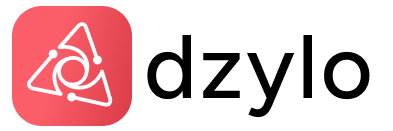Portfolio improvement starts with knowing what sets your work apart.
‘Portfolios are everything, Promises are nothing. Do the work.’
For designers, architects, and 3D artists, a portfolio is the foundation of your career. It reflects your skills, process, and personality. A strong portfolio opens doors—and your work should speak louder than words.
Building one isn’t optional. And today, portfolio improvement is a continuous process.
Platforms like Dzylo make it easy to showcase your work, get real feedback, and unlock new opportunities.
Here are a few tips to help you build a portfolio that truly stands out.
1. Give thought to Perception!
Your portfolio speaks volumes about your personality. It should be well perceived by anyone who’s looking at it. We recommend our Artists give a thought about how they want to be understood or interpreted by their recruiters or clients. It means, there must be something that describes and should be reflected in your work. For example, If a person likes to render landscapes and surroundings, then that should be visible through his/her work. If they have multiple skills they want to portray, they should be able to sophistically portray those through their portfolio. This kind of clarity is key to meaningful portfolio improvement.
2. Choose Your Best!
Not everything you do might make it to the front page of your portfolio, it’s that ONE Project which you know was your best and you would want people to look at. It’s always the Quality over Quantity that wins the game. Sometimes what you work on might not result in a way that speaks your skills, maybe you tried more and you achieved better results by doing something in the second attempt. In that case, it becomes important for us to know what to keep on the table and whatnot. The filtering may come with its toils but it’s worth it because at the end you will see your portfolio as a collection of what’s your best. Thoughtful curation is one of the most effective steps toward portfolio improvement.
3. Shine Through Your Strengths!
It’s about what you’re best at, what you enjoy doing the most. Do what you love and you’ll always love what you do. A creative profession demands your heart and soul and that is achievable if you love what you’re doing. You’re highly motivated to do a job because if it is something that you love doing then it doesn’t seem like a task anymore.
4. Keep It Straightforward!
Everyone will tell you what to do for your portfolio, what no one will tell you is—keep it short and crisp. Recruiters or anyone going through your portfolio will not be scrolling it entirely until they find something really interesting to dig into. Your portfolio should be straightforward and crisp, leaving no scope for people turning pages without stopping and looking at your work.
5. Keep It Versatile!
It’s always good to show variety—your interests, skills, and how you’ve evolved through portfolio improvement. Include your accomplishments and experiences—they reveal your personality. Clients want to see what you learned from each project, even mistakes you grew from. If you sketch before starting, save those drafts. They’re part of your journey. If you’re a 3D artist who also drafts plans, include that too. It all contributes to a powerful, well-rounded portfolio.
6. Keep Updating and Revisiting!
There’s never really a portfolio that once created is always going to be the same. You keep updating it as you climb your ladder up. One must get into the habit of documenting your work. You must always keep records and track your progress so that keeping your recent work-ready becomes easy. That way, clients can see your progress, your up-leveling with the skill set. Regularly updating your work reflects your professionalism and gives you higher chances of getting precisely perceived by recruiters.
7. Share Your Portfolio!
It may sound uncommon but constructive feedback can help you improve your portfolio a lot! You should always share your portfolio on all Social Media Platforms possible because it boosts your confidence every time someone appreciates your work, praises it, shares it, or even gives suggestions. Sharing with your mentors can always get you constructive feedback because they will know the best of you. Regular feedback is one of the most valuable tools for ongoing portfolio improvement.
In Conclusion
Now that you’ve explored the fundamentals of building a strong portfolio, it’s time to get started. Remember, you don’t need to perfect it all at once—revisit and refine as you grow. Consistency matters, but so does balance. Don’t overdo it; evolve your portfolio with purpose.
Platforms like Dzylo make it easy to get expert feedback and real-world guidance on your work. Explore a wide range of portfolios from fellow 3D artists and find creative inspiration to shape your own. Whether you’re starting fresh or updating your best projects, Dzylo helps you take your portfolio to the next level.

